The MEKO 200 is a frigate (FFG) design by the German shipyard Blohm+Voss as part of the MEKO family of warships. Ten MEKO 200 frigates were built to the Anzac-class design; eight for the Royal Australian Navy (first ship entered service in 1993), and two for the Royal New Zealand Navy (first ship entered service in 1994).
Eight MEKO 200TN frigates were acquired by Turkey in three different tracks: four Track I/Yavuz vessels (first ship in 1987), two Track IIA/Barbaros class vessels (first ship in 1997) and two Track IIB/Barbaros (Salihreis subclass) vessels (first ship in 1998). Portugal acquired three MEKO 200PN/Vasco da Gama class (first ship commissioned in 1991) and Greece four MEKO 200HN/Hydra class (first ship commissioned in 1992). Total 25 vessels of seven (7) configurations! This article focuses on the Mild-Life Upgrade (MLU) programmes that are implemented on the MEKO 200 classes worldwide, of which some of them have change completely the appearance of the ships.

Royal Australian Navy - MEKO 200/ANZAC class
This summer, in June 18th, the Royal Australian MEKO-200 ANZAC class frigate HMAS Arunta, returned to her home port of Fleet Base West after a 20-month Anzac Midlife Capability Assurance Program (AMCAP) upgrade where she rejoined the fleet, begin conducting work-ups and testing the new equipment on-board. Arunta is the first ship in the Fleeet to undergo the program which provides significant improvements to the ship’s key sensor and communications systems. The upgrade was performed by the Warship Asset Management Agreement (WAMA) Alliance and included the replacement of the SPS-49(V)8 long range air search radar with the new CEAFAR2-L radar, new IFF, improved secondary surveillance radar capabilities, improvements to the control and monitoring system, engine modifications to improve power and efficiency as well as upgrades to the LESCUT, AN/SLR-25C torpedo self defense system and the Nulka active missile decoy capability. Arunta also underwent a platform systems obsolescence program to improve platform reliability and maintainability. Work was also performed to improve the ship’s habitability for the crew (upgraded ventilation systems, new sewage systems, extra crew berths, galley refurbishment) as well as an upgrade to the ship’s communications systems. This is the second modernization program for the Australian MEKO 200 ANZAC frigates.

From 2010 until 2017, the Anti Ship Missile Defence (ASMD) program, the first upgrade program, was implemented on the eight ANZAC frigates. The upgrade significantly improved the anti-ship missile self-defence capabilities of the ANZAC class ships by integrating five major systems: the CEA Phased Array Radar, CEAMOUNT illuminators (integrated on the new mast), the Sagem Vampir NG Infrared Search & Track System, the Kelvin Hughes Sharpeye navigation radars, the JEDS ExelisES-3701 ESM, Cossor AIMS Mk XII IFF and an upgraded Saab 9LV Mk3E Combat Management System (9LV453 Mk3E). The masts were replaced, and the operations room layout was improved. Additional ballast was required to maintain stability, and the combined weight increase brought the ship's full load displacement to 3,810 tons. From 2005 onwards, the RAN began fitting the frigates with Harpoon Block II missiles in two quad-tube canister launchers. The Mk 32 torpedo tubes aboard the Australian frigates were originally fitted with American Mark 46 anti-submarine torpedoes, but these were replaced with the French-Italian MU90 Impact torpedo prior to 2008. The ships also later on received the MH-60R helicopter. Note that some of the vessels in the class are equipped with the MK45 Mod 4 5in gun instead of the Mod 2 one.
- Where are the Frigates?
- Could New Zealand join the Type 26 Frigate programme?
- Focus on the Future; Don't Fixate on Frigates
- Is CAMM the right air defence for the Royal New Zealand Navy?

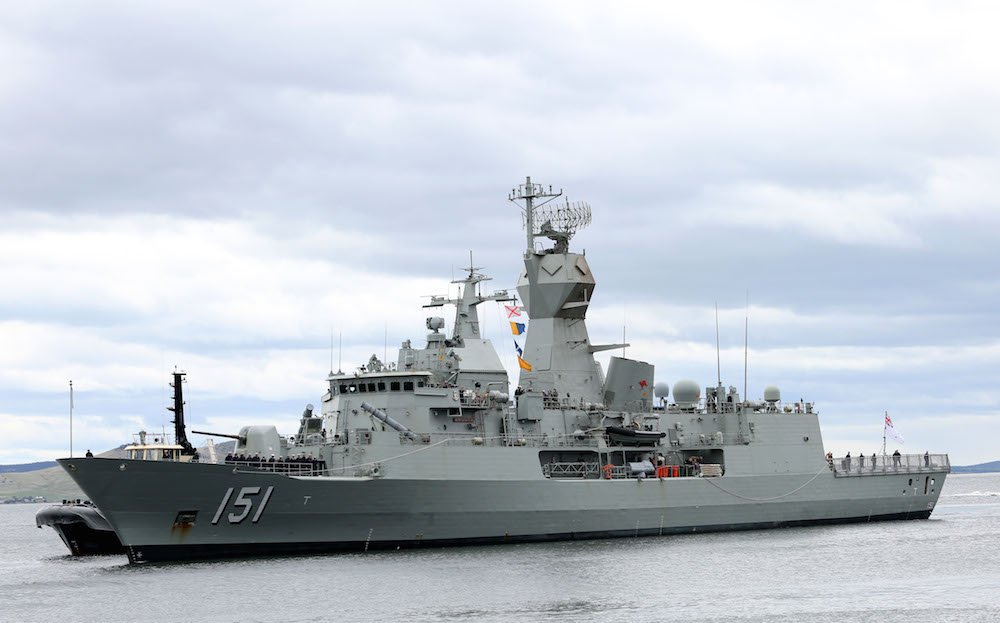
Royal New Zealand Navy - MEKO 200/ANZAC class
In 2006-7, the two vessels in the class began undergoing a series of major upgrades as part of the four-stage Platform Systems Upgrade (PSU). The four areas of modification under the PSU were improved stability and compartment configuration changes, overhaul of the propulsion system, installation of a new integrated platform management system (IPMS), and upgrades to onboard environmental control. The ships received two Mini Typhoons RWS each atop the bridge. The second ship in the class, Te Mana, has the Mk45 Mod 4 gun instead of the Mod 2 on the first ship Te Kaha. Moreover, their Phalanx CIWS has been upgraded to the latest standard, Block 1B Baseline 2 and will be upgraded again according to the DCP 2019.

A new series of upgrades were approved on 14 April 2014 under the ANZAC Frigate Systems Upgrade (FSU) programme. These include among others the replacement of the existing combat management system, awarded to Lockheed Martin, installation of the Sea Ceptor anti-air missile replacing the Sea Sparrow on 27 May 2014 awarded to MBDA, and the fitting of a Sea Sentor Surface Ship Torpedo Defence system awarded to Ultra Electronics Limited.
A contract was awarded to Thales Australia Ltd on 11 June 2014 for the provision of the Broadband Sonar Advanced Processing System (BSAPS) for the Spherion B hull-mounted sonar and the TUUM-6 multi-channel Digital Underwater Communication System (DUWCS).

Moreover, another contract was awarded to Airborne Systems Limited on 3 July 2014 for the provision of certain anti-ship missile defence soft-kill subsystems, along with training and support, spares, support and test equipment, and full documentation. Finally, a contract was awarded to Northrop Grumman on 26 February 2015 for the replacement of the frigates Inertial Navigation System. The ships will use Lockheed Martain's CMS 330 combat management system as the backbone of the technical solution for the operations. The total project costs $446 million including project management costs, contingency, introduction into service and capitalisation costs. In the following graph, created by Lockheed Martin, is summarized the whole MLU programme. As of 2019 both vessels are in Canada getting these upgrades.

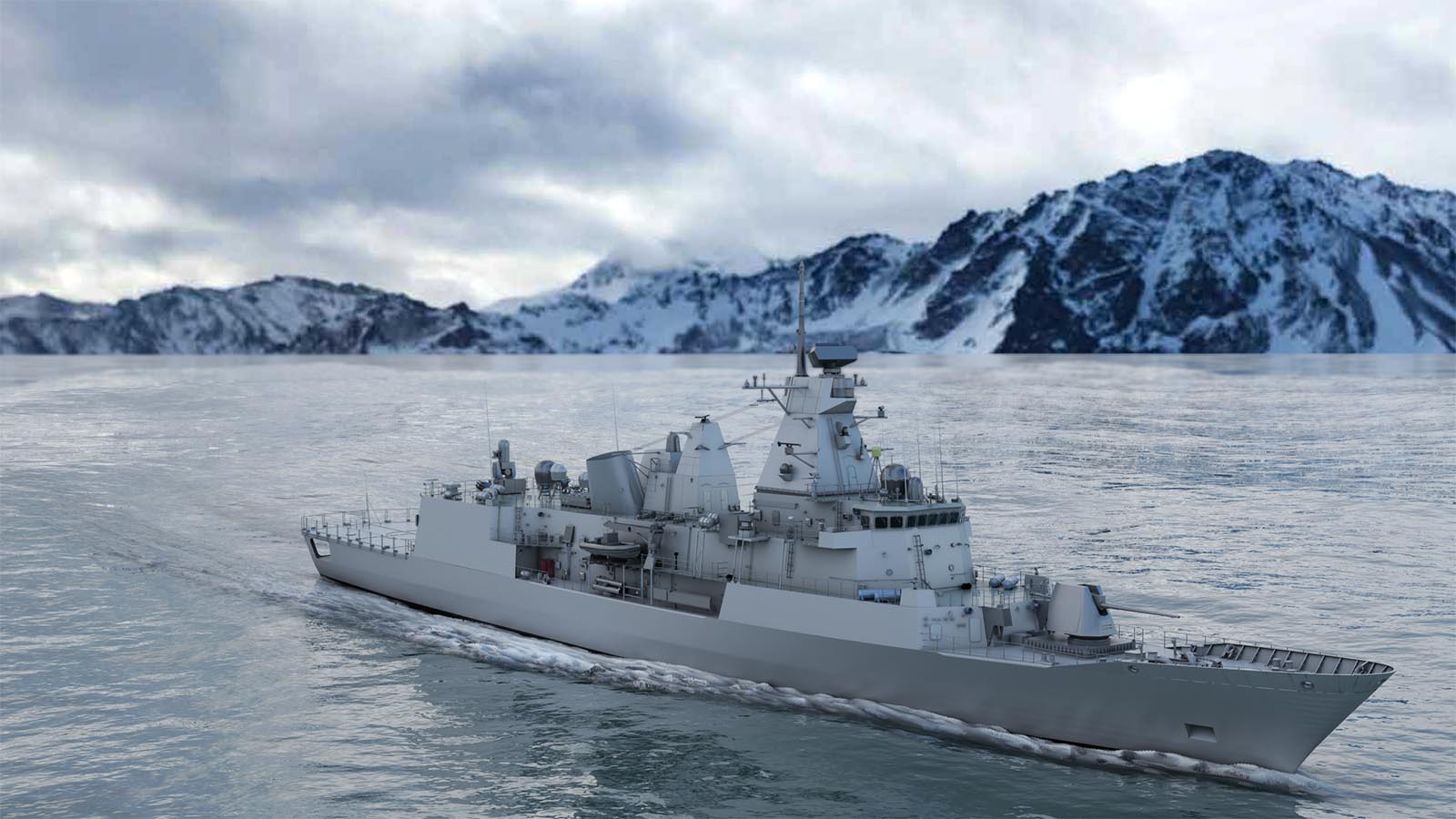

Turkish Navy - MEKO 200TN I/IIA/IIB
The Yavuz class (MEKO 200TN Track I), consists of four frigates. Currently, the ships are receiving very limited upgrades, because they are about to retired by mid-2020s, which are mainly focused on the replacement of the existing Racal Cutlas-B1 ESM system with Aselsan’s ARES-2NC ESM system. New Aselsan SATCOM antennas were fitted as well. It is not known yet the ships the will receive the complete Aselsan Electronic Warfare Suite that consists of the following systems with the exception of the ESM antenna.
 Yavuz class frigate of the Turkish Navy
Yavuz class frigate of the Turkish Navy
The Barbaros class frigates ( MEKO 200TN Tack IIA and IIB) were partially upgraded locally during the 2012-2015 time frame with the replacement of the old AWS-9/Type 996 with the Thales SMART-S Mk2 and the replacement of the 8-cell Mk-29 Sea Sparrow launcher with 8-cell Mk-41 VLS for 32 ESSMs on TCG Barbaros and TCG Oruçreis of Track IIA, while the existing 16-cell Mk-41 VLSs on TCG Salihreis and TCG Kemalreis were upgraded to Baseline VII configuration. Thanks to the Baseline VII upgrade the number of RIM-162B Blok I ESSMs on Track IIB Frigates were increased to 64 (but, due to total weight, capacity and stability issues the frigates usually are armed with a mix of 32 ESSM and 8 SeaSparrow missiles.
 Barbaros class (Tack IIA) frigate after her first upgrade.
Barbaros class (Tack IIA) frigate after her first upgrade.
A contract signed on 9 August 2018 for the MLU of the ships. The MLU is scheduled to be completed by 2024. Under the contract, the existing Combat Management System (STACOS Mod 3/TACTICOS) will be replaced by a new Genesis variant CMS namely ‘ADVENT’, and some of the existing weapons/sensors will be replaced with new ones on a one-to-one basis. In this context, the AWS-06 Dolphin radar is expected to be replaced with Aselsan’s MAR-D AESA radar, Sea Guard CIWS with three Sea Zenith four-barrelled 25mm gun mounts are expected to be replaced with one Phalanx Mk-15 Block 1B Baseline 2 and two of Aselsan’s 25mm STOP stabilized gun systems (at the aft section at starboard and port), the existing AN/SQS-56 hull mounted sonar will be replaced with a new generation Mid-Frequency Band (1kHz-10kHz) active/passive FERSAH (indigenously developed by Aselsan and Armelsan) Sonar System, existing AN/SLQ-25 Nixie Torpedo Decoy/Defence System will be replaced with Aselsan’s HIZIR Torpedo Defence System, Aselsan’s ARES-2NC Radar ESM and AREAS-2NC Naval Electronic Attack (EA) Systems will replace the existing Cutlas-1B ESM, and Scorpion-B EA Systems and an indigenous 127mm (5/54) Gun Fire Control System will be integrated on the vessels. The frigates will also be integrated with Aselsan’s LIS Lazer Warning System, PIRI IRST System and a dual-band Fire Control Radar (AKR-D Block-B2, X and Ka-Band radar with 120km range) for the ESSM. The MLU Contract also includes an option for the integration of Armelsan’s ARAS-2023 Diver Detection Sonar System on four vessels. The MLU is designed to extend the BARBAROS Class Frigates’ operational life until 2040s when they are planned to be replaced by a new design. A great article about the plans of the Turkish Navy for the next decades can be read here.
 Frigate Salihreis fires an ESSM during exercise
Frigate Salihreis fires an ESSM during exercise
Hellenic Navy - MEKO 200HN/Hydra class
In 2007, an upgrade of the STIR fire control systems to allow the firing of the RIM-162 ESSM surface-to-air missile was launched as well as the re-integration of the modified Mk48 VLS for the Hydra class frigates. The program completed during 2009. In 2019, the Supreme Naval Council decided the commencement of the modernization program for the four ships of the class. The available funds are 150 million € and the whole program will be implemented in the Salamis Naval Base. Due to the financial difficulties of Greece, the available funding is not enough for a full modernization program and it is going to cover only a very basic upgrade. The implementation of the so-called "Mid-Life Modernization program" will allow the upgrading of the electronic combat systems, sensors and radars, which are necessary to increase the combat power of ships. According to reports of Greek defense magazine Ptisi the upgrade will include 12 basic subsystems of the ship including a new CMS, a new 3D air search radar that will replace the old DA-08, new navigation radars, new intra-communication systems, new ESM that will replace the old AR-700, Link-16 tactical data link network and the installation of a laser warning system. The program will start running from 2020 and it is expected to be completed by 2024. Meanwhile a new electro-optical system was installed on the ships, the Miltech TDR-10 (Salamis) and TDR-10A (Hydra, Spetsai, Psara).

The CMS could be one of the following: Thales TACTICOS, Lockheed Martin CMS330, Saab 9LV Mk4 and Naval Group SETIS. The candidates for the new 3D radar could be one of the following: Saab Sea Giraffe AMB or 4A, Thales NS100 or SMART-S Mk2 and Hensoldt TRS-4D. The new navigation radars could be SharpEye, Pathfinder, SCOUT Mk3, VisionMaster FT, SCANTER, etc. The new ESM: Saab SME-250, Thales Vigile, Harris ES-3601/3701, Elbit ELISRA, Rafael C-PEARL. The laser warning receiver Saab or Elbit more likely. A new COMINT system (Thales Altesse?) will replace the old Telegon 10 while the APECS II jammers (ECM systems) will remain intact or will be removed similarly to modernized Karel Doorman class frigates. Note that the Navy will acquire at least four MH-60 Romeo helicopters which will increase significantly the situational awareness and ASW capabilities of the ships if they are embarked. There is a probability also that the Phalanx CIWS will be upgraded to the latest configuration Block 1B Baseline 2.
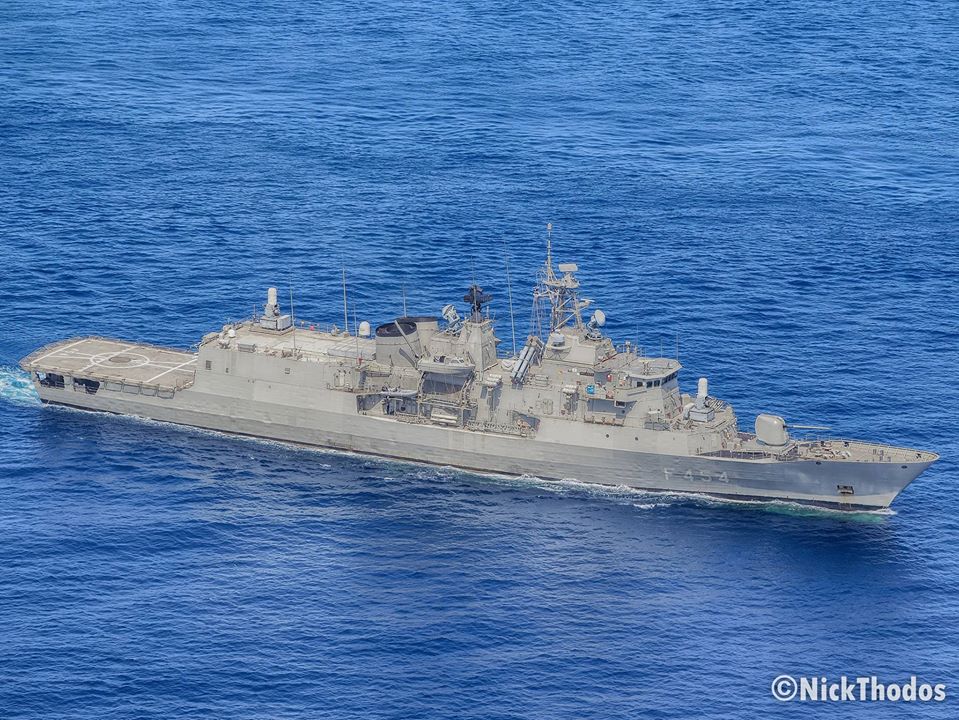
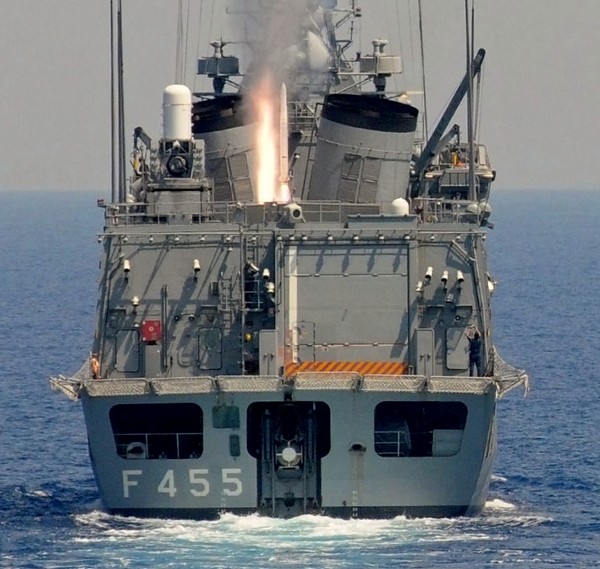
In the following graph, the major systems that will be installed during the program are depicted. The photos of the systems do not represent the actual ones that will be installed. The highly unlikely upgrades on the Mk45 gun and the Mk 32 torpedo launchers have been also included. In the beginning of 2020 we will be able to know more about the program and the exact equipment the ships will receive.
Portuguese Navy - MEKO 200PN/Vasco da Gama class
Vasco Da Gama class will receive a more limited modernisation that will necessitate repurposing the frigates for low-intensity missions only. In 2015, the Vice Adm. Antonio Silva Ribeiro, director general of the Maritime Authority of Portugal, declared that the modernization will focus on sustaining radars, and improving IFF, electronic warfare, and electro-optic GPS sensors. Note that their Phalanx system has been upgraded to the latest configuration, Block 1B Baseline 2 while there is space for a second CIWS forward of the bridge, similarly to the Greek Hydra class. To improve command and control, the satellite communications and other communications systems, including Datalink 11, 16, and 22 – the latter fitted for the combat management system – and the decision support system will be upgraded.
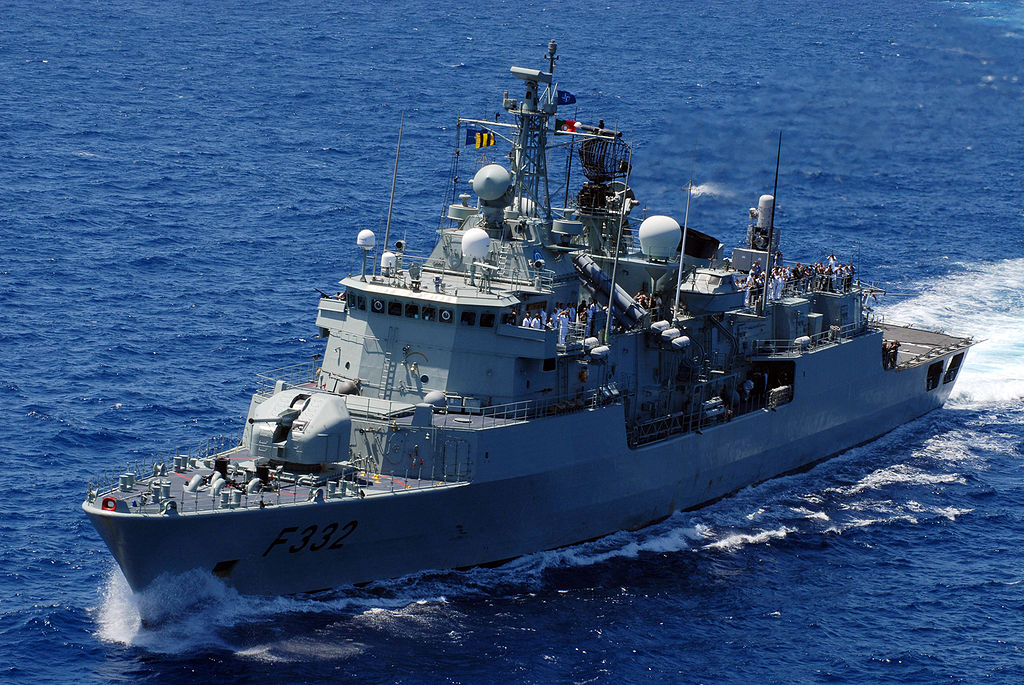
The engineering integrated platform management system will also be improved during the refit. Moreover, General Dynamics Canada is installing an adjunct processing system on the frigates of the class. Designed by General Dynamics Canada, the ECLIPSE adjunct processor provides the in-service AN/SQS-510 sonar systems with enhanced operational capability to detect submarines and torpedoes. The ECLIPSE processing system will work in parallel with the AN/SQS-510, leveraging the data collected from the existing sonar system. The addition of the ECLIPSE processing system will significantly improve the ability to detect and characterize echoes and sounds transmitted through the water to determine location and physical characteristics of potential threats. In addition, ECLIPSE provides new ways of displaying the processed sonar information, with greater detail in a simplified format that allows operators to detect contacts earlier, and with more clarity than before. The information is displayed on new, state-of-the-art high-resolution flat panel monitors.

The system also provides enhanced capabilities for training as well as record and replay of acoustic data. Work will include also a new integrated communication system and a new integrated platform management system.The planned upgrade has been scaled back due to budgetary constraints.





